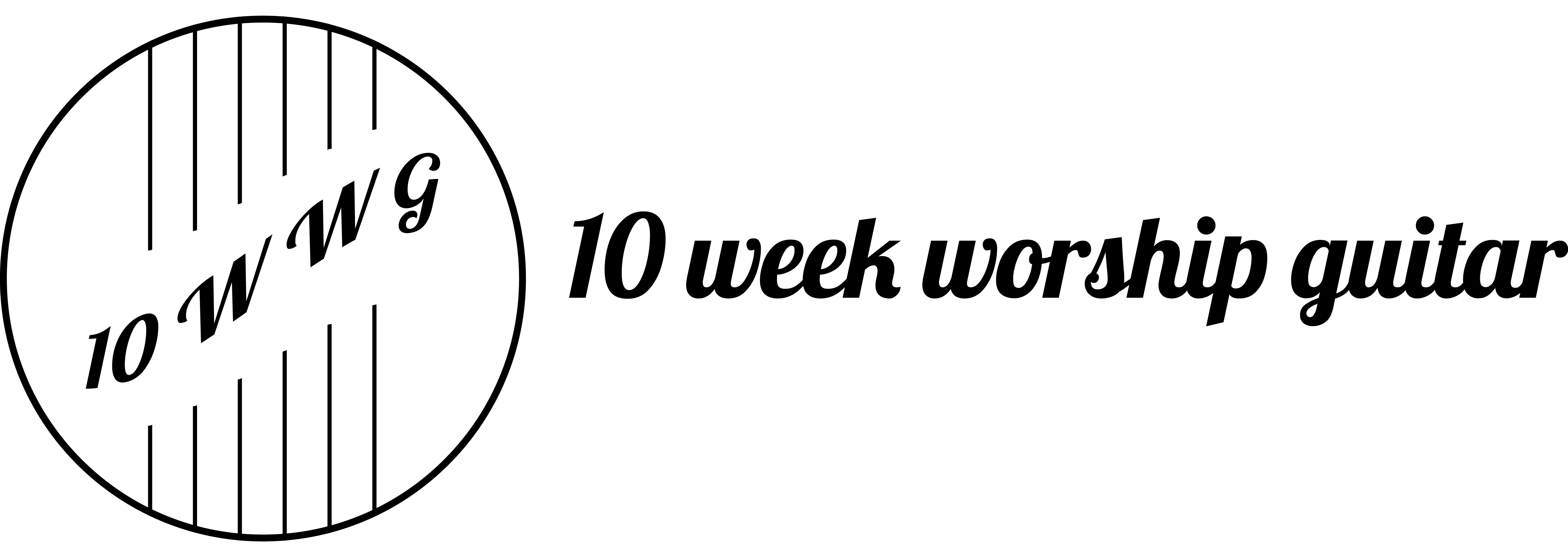Welcome to The Ten Week Worship Guitar blog. As well as my recent resurrection of my YouTube channel, on which I’ve now begun sharing a weekly worship guitar focused workshop called ‘Worship Workshop Wednesday’, I recently resumed blogging. I started with a 3-part series on why I teach worship guitar as opposed to just playing it.
Now, over the next few weeks and months, here on the blog, I’ll be sharing something which I’ve not extensively shared anywhere before. I’ll be sharing some work from my Ph.D, which focuses on the development of the guitar over the last century, and it’s influence on the music produced on it. If you’re interested in learning more about the guitar, look no further than this blog. If you know others who would be interested in this too, please share with them.
A new post will be shared here on the blog every Monday, so do ensure that you’re following the journey, and don’t forget to subscribe to my YouTube channel, where you’ll receive a free workshop every week which will teach you not only a new worship song to add to your repertoire, but also a skill, which will continue to carry you forward in your worship guitar journey.
The guitar in the USA – Design and development: Part One
Developments of the guitar can be seen to have had some effect on the music produced on it.
The guitar became synonymous with blues during the early years of the twentieth century. Grunfeld states that “For blues singers like [Son] House and [Skip] James there was something tactile and responsive about the guitar that a piano could never hope to reach” (1974: 250). Certainly the tactile qualities and responsiveness are very different on the two instruments. Therefore the physical attributes of the instrument itself are of great importance in the consideration of music because, as Pressing states:
… the design of some instruments allows more precise visual feedback and more categorical kinaesthetic feedback than others. This is almost certainly why sophisticated improvisation using advanced pitch materials is more difficult on the violin than the piano, and extremely challenging for the vocalist. (1988: 135)
The guitar is closer to the piano than to the violin.
On the guitar fret locations provide strong visual and tactile reference points for the improvising guitarist.
The history of the blues is closely related to the development of the guitar. The two are inextricably linked in that some developments in the music occurred because of developments in instrument design, and some instrument design occurred because of the demands of musicians. For Oliver “One of the many factors which influenced the character of the blues was the popularity of the guitar” (1969: 27). Evans observed, “The demand for more guitars – first for home entertainment, vaudeville and popular music orchestras, later for blues, country, jazz and folk music – changed the essential nature of American guitar production” (1977: 222). Furthermore, the guitar may not have achieved the popularity that it did among blues players were it not for these developments.
String instruments were tolerated, even encouraged on the plantation, whereas the use of drums was forbidden, and plucked lutes were familiar to black musicians from African derivatives. And by the 1850s the banjo had become the predominant folk instrument in the Southern States. But Oliver believes that: “The short, staccato notes of the banjo did not accord with the blue’s singer’s concepts of accompaniment, offering neither long notes nor the warm and deep resonance of a guitar rhythm” (1969: 27).
The guitar was initially imported to the United States from Europe, and most of the early luthiers there were European immigrants. Grunfeld believes that in the United States guitars “appeared on the scene from three directions: The Eastern cities that followed London trends in drawing room music; the Spanish Southwest… and the South” (1974: 238)…
Join me here on the blog again next week as I’ll be continuing this series going through the development of the guitar. Next week I’ll be sharing a little more context around where the guitar was first introduced.
By the way, if you’ve always wanted to play worship guitar but have never found the time, I’d love to introduce you to learning to play from scratch by going through my FREE 3-part miniseries which will give you not only the skills, but will also give you three new worship songs to add to your repertoire. Click HERE to access the free series and start (or continue!) your worship guitar journey today!
